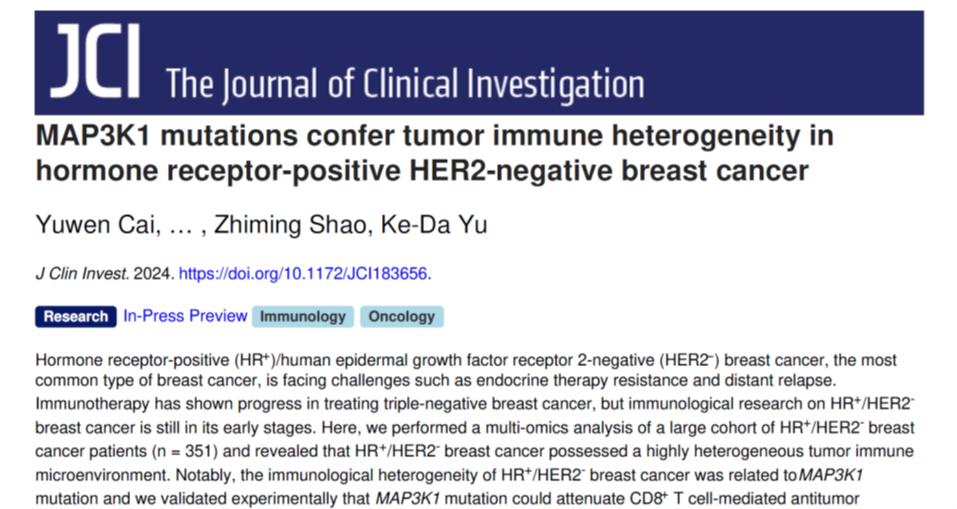NEWSROOM
-
Hormone receptor-positive/human epidermal growth factor receptor 2-negative (HR+/HER2-) breast cancer, often referred to as "luminal-type," accounts for approximately 65-70% of all breast cancers. Treatment for this subtype primarily involves surgery and endocrine therapy, with generally favorable prognoses. However, 30-40% of patients with this subtype still encounter face challenges such as endocrine therapy resistance and a high risk of long-term recurrence and metastasis, highlighting the need for novel therapeutic strategies to improve patient outcomes. Immunotherapy, a prominent area in oncology, has shown promise in triple-negative breast cancer but has had limited impact on luminal-type disease.
Luminal-type breast cancer has traditionally been viewed as having a "cold" immune profile, implying a limited response to immunotherapies and resulting in sparse research efforts. However, recent data have uncovered significant immune heterogeneity within this subtype. Specifically, phase III trials KEYNOTE-756 and CheckMate 7FL have demonstrated the efficacy of immunotherapy in patients with immunogenic luminal-type breast cancer. Further investigation into the molecular underpinnings of this immune heterogeneity, along with the development of tailored therapeutic strategies, could potentially extend the reach of immunotherapy to a wider spectrum of breast cancer patients.

Researchers led by Professor Ke-Da Yu from the Fudan University Shanghai Cancer Center have conducted a pioneering study on immune therapy targets in HR+/HER2- breast cancer, with their findings published in The Journal of Clinical Investigation on November 12, 2024. The team conducted a multi-omics analysis of a large HR+/HER2- breast cancer cohort (n = 351), uncovering two subtypes with similar tumor mutation burden and clinical characteristics but distinct immunological profiles. They found that the immunological heterogeneity in HR+/HER2- breast cancer correlated with the prevalence of MAP3K1 mutations, with the immunosuppressive subtype exhibiting a higher frequency of these mutations. Further experiments confirmed that MAP3K1 mutations could diminish CD8+ T cell-mediated antitumor immunity. Mechanistically, MAP3K1 mutations were shown to suppress major histocompatibility complex class I (MHC-I)-dependent tumor antigen presentation by promoting the degradation of antigen peptide transporter 1/2 mRNAs, thereby facilitating tumor immune evasion. In preclinical models, the postbiotic tyramine was effective in reversing MAP3K1 mutation-induced MHC-I downregulation, enhancing the effectiveness of immunotherapy.
Numerous tyramine-rich foods, including tofu and cheese, are readily available and can effectively supplement the body's tyrosine levels. Such dietary intake may help reshape the immune microenvironment in luminal-type breast cancer, enhancing responsiveness to immunotherapies such as anti-PD-1. This research underscores the potential of 'food as medicine,' but the specific therapeutic effects await validation through extensive clinical studies. Overall, this study has identified a key driver of immunological heterogeneity in HR+/HER2- breast cancer and elucidated the underlying molecular mechanisms, suggesting the potential of postbiotic tyramine as a novel therapeutic agent to boost the efficacy of immunotherapy for this disease subtype.

